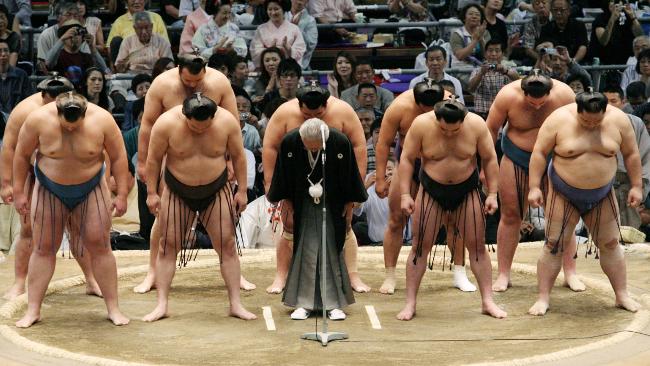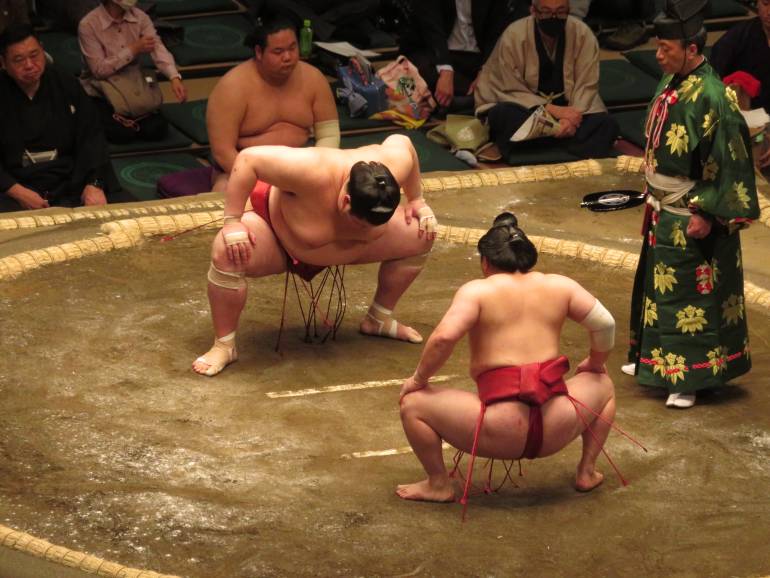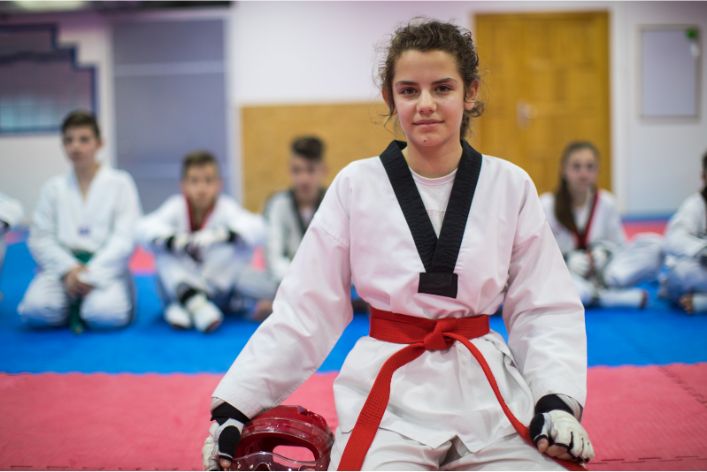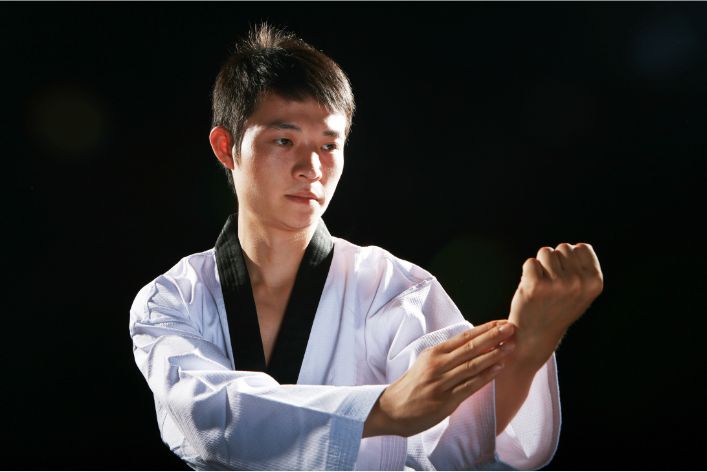Last Updated on May 26, 2023
A Sumo wrestler has a unique physique which is a result of their intense training regimen. Sumo wrestling is a traditional Japanese sport that dates back over 1,500 years. It involves two wrestlers battling it out in a ring known as a dohyo.
Training like a sumo wrestler can provide numerous benefits such as increased strength, enhanced flexibility, improved cardiovascular health, and overall fitness. Sumo wrestlers are known for their incredible power and agility, which is a testament to their rigorous training.

By adopting the techniques used by sumo wrestlers, you can improve your own physical fitness and take your training to new heights. Whether you are an athlete looking to gain an edge or simply someone who wants to live a healthier lifestyle, training like a sumo wrestler can help you achieve your goals.
In this blog chapter, we will take a closer look at the techniques used by sumo wrestlers and how you can implement them into your own training routine. With a bit of dedication and hard work, you too can develop the strength, agility, and power that are the hallmarks of a sumo wrestler’s physique. So, let’s dive in and explore the world of sumo wrestling training!
Core Training Techniques
Core strength is crucial in Sumo wrestling as it helps improve balance, stability, and power. Here are some tips and techniques for developing a strong core:
Basic Core Exercises:
- Plank: Get into a push-up position with forearms on the ground. Keep your back straight and hold the position for as long as you can.
- Crunches: Lie on your back with your knees bent and feet flat on the ground. Lift your shoulders off the ground using only your abdominal muscles.
- Bicycle crunches: Lie on your back with your hands behind your head and your knees bent. Bring your left elbow towards your right knee while straightening your left leg. Alternate sides.
- Leg Raises: Lie on your back with your hands under your hips and slowly lift your legs until they are perpendicular to the ground.
Advanced Core Training Techniques:
- Weighted Twists: Sit on the ground with your knees bent and feet flat on the floor. Hold a weight plate with both hands and twist your torso from side to side.
- Medicine Ball Throws: Stand with your feet shoulder-width apart and hold a medicine ball in front of you. Twist your torso and throw the ball against a wall. Catch it and repeat on the other side.
- Wood Choppers: Stand with your feet shoulder-width apart, hold a dumbbell with both hands, and raise it over your head. Bring it down diagonally across your body towards your opposite knee. Repeat on the other side.
- Pallof Press: Stand perpendicular to a cable machine and hold the handle with both hands at chest height. Extend your arms and push the handle away from your body.
Incorporating these exercises in your training routine can help you build a powerful core which is essential in performing techniques like lifting and throwing your opponent. However, it’s important to remember that training like a Sumo wrestler requires a lot more than just core strength. You need to develop your lower body strength, flexibility, and endurance as well.
Stay tuned for the final chapter where we discuss some tips and techniques for developing the lower body and improving your overall Sumo wrestling performance.
Read: The History of Sumo Wrestling: A Deep Dive
Strength Training
Sumo wrestlers are known for their incredible strength, and to achieve this, they use a variety of strength training techniques. Here is an overview of the types of strength training used by Sumo wrestlers:
1. Resistance Training
Resistance training involves using weights or other forms of resistance to build muscle strength. For Sumo wrestlers, this may include using barbells, dumbbells, or kettlebells in exercises like deadlifts, squats, and bench presses.
2. Bodyweight Training
Bodyweight training involves using your own bodyweight to build strength, and Sumo wrestlers may use exercises like push-ups, pull-ups, and dips to build upper body strength.
3. Plyometric Training
Plyometric training involves explosive and dynamic movements, like jumping and bounding. Sumo wrestlers may use plyometric exercises like box jumps and medicine ball throws to build explosive power.
4. Isometric Training
Isometric training involves holding a position without moving, and Sumo wrestlers may use exercises like planks and wall sits to build core strength and endurance.
5. Sumo Deadlifts
Sumo deadlifts are a specific type of deadlift used by Sumo wrestlers to build strength in their legs, back, and grip. To properly perform Sumo deadlifts, follow these tips:
- Stand with your feet wider than shoulder-width apart, toes pointing out.
- Place your hands inside your legs and grip the bar.
- Keep your back flat and chest up as you lift the bar off the ground.
- Drive your hips forward and pull your shoulders back as you stand up.
- Lower the bar back down to the ground in a controlled motion.
6. Other Strength Building Exercises
In addition to Sumo Deadlifts, Sumo wrestlers may perform other specific exercises to build strength, including:
- Hip thrusts to build explosive power
- Glute bridges to strengthen the glutes and hamstrings
- Single-leg deadlifts to improve balance and stability
- Farmer’s carries to build grip strength
- Sled pushes and pulls to strengthen the legs and core
Strength is a key component of Sumo wrestling, and by incorporating these strength training techniques into your workout routine, you can improve your overall strength and power.
Read: What are the Basic Rules of Sumo Wrestling?
Footwork and Balance
Footwork and balance are essential components of Sumo wrestling that determine the success or failure of a match. Good footwork enables a wrestler to dodge attacks, move quickly, and maintain balance and stability during clashes with their opponent. On the other hand, a lack of balance is often exploited by opponents to push, pull or tilt the wrestler out of the ring, resulting in defeat.
To improve footwork, Sumo wrestlers incorporate different techniques into their training routines. For instance:
- Shiko: This is a common exercise that involves standing with legs wide apart, stretching lower body muscles by squatting, then quickly lifting one foot up, slamming it back down on the ground, and repeating the same action with the other leg. The exercise challenges balance and knee strength and heightens kicking speed and stability.
- Tsuriyane: This technique emphasizes the importance of foot placement by requiring the wrestler to maneuver both legs while maintaining balance on tip-toes. This skill is vital during actual matches since it enables the wrestler to shift their weight rapidly and explosively when engaging with their opponent.
- Tsukebito: This drill places emphasis on quick and precise movement by requiring the wrestler to mimic their opponent’s movements. By doing so, the wrestler can understand how to position their feet correctly and control their weight distribution better.
- Okuri-ashi: This technique involves moving the trailing foot in quick motions to maintain momentum and balance. It is a deeply ingrained skill in Sumo wrestling as it allows the wrestler to shift their center of gravity smoothly and adjust the speed and direction of their movements.
Sumo wrestling requires an athlete to maintain good balance, and wrestlers develop this skill in several ways:
- Standing on a boulder: As the name suggests, this drill involves balancing on top of a boulder or other uneven surfaces and requires the athlete to adjust their balance continually. Also, the wrestler can use this drill to strengthen their ankles, knees, and other lower body muscles.
- Suri-ashi: This is a training technique in which wrestlers move their foot only by sliding it on the ground, staying on the balls of their feet, and keeping their heels off the ground. The drill targets the muscles around the lower limbs, improving stability and balance while moving forward or backward.
- Mitori-geiko: This refers to watching and mimicking the movements of other wrestlers to develop dynamic visual skills and gain the ability to predict their opponent’s movements. This exercise improves balance by teaching the wrestler when and how to shift their weight to prevent a fall or loss of stability.
- Tsuri-dashi: This is a practice technique in which a wrestler hangs from a rope or pole suspended in the air. The athlete uses their body’s momentum to swing back and forth, testing and improving their balance by adjusting their center of gravity and making minor corrections to maintain stance or prevent sudden falls.
In short, Footwork and balance are crucial skills in Sumo wrestling that all wrestlers must master. The techniques and drills above are just some of the many ways that Sumo wrestlers use to improve their footwork and balance. Aspiring and even experienced athletes should incorporate these drills into their training routines to improve skills that could make the difference in winning or losing a match.

Diet and Nutrition
Sumo wrestling may be a very physical sport but it also requires proper diet and nutrition to stay in top shape. Here are some tips on how to eat like a sumo wrestler:
Overview of the Typical Sumo Wrestler’s Diet
A sumo diet consists of two heavy meals a day. A typical meal comprises of a massive bowl of chankonabe, a protein-rich stew that usually contains fish, meat, tofu, and vegetables. They also consume a lot of rice, which evidently adds up to their body fat percentage, but is necessary to keep the muscles fueled throughout the day. Sumo wrestlers also eat a lot of vegetables and drink plenty of water.
Tips for incorporating Sumo-style nutrition into your diet
If you’re looking to eat like a sumo wrestler, here are some tips to help you incorporate their unique nutrition habits:
- Eat plenty of protein-rich stews or soups that contain meat, tofu, and vegetables. These will help you gain muscle mass.
- Include a lot of rice in your diet, as it’s energy-dense and can support a physically demanding activity.
- Eat a lot of fruits and vegetables to keep your body supplied with the necessary vitamins and minerals.
- Drink plenty of water to keep yourself hydrated and help flush toxins from your body.
Discussion on the importance of maintaining a healthy weight for Sumo wrestling
While sumo wrestlers may appear overweight, they are actually in great shape. Their large size is a result of their muscle mass, which helps them withstand the force of an opponent and maintain balance in the ring. However, as they age, sumo wrestlers often struggle with weight gain and the health risks that come with it, such as high blood pressure, heart disease, and diabetes. Therefore, it is crucial for them to maintain a healthy weight in order to perform their best in the ring and avoid serious health problems.
It’s important to note that while sumo-style nutrition can provide the necessary calories and protein to support a physically demanding activity, it may not be suitable for everyone. It’s always best to consult a healthcare professional or a certified nutritionist before making any major changes to your diet to ensure that it’s safe and healthy for you.
In fact, diet and nutrition are crucial components of sumo wrestling. The sport demands a lot of energy and physical strength, which can only be achieved through proper nutrition. Incorporating sumo-style nutrition into your diet can help you gain muscle mass and maintain a healthy body weight. However, it’s important to make sure that your diet is healthy for you and your specific needs.
Read: How to Find Value in Betting on Underdog Teams
Mental Training
In Sumo wrestling, mental training plays a crucial role in achieving success. It involves honing mental toughness, and focus, and embracing a mindset that is essential for overcoming adversities in the ring.
Techniques for Improving Mental Toughness and Focus
- Visualization – Visualization techniques help Sumo wrestlers to establish a winning mindset before a match. Envisioning success can help to increase confidence and reduce anxiety.
- Meditation – Meditation helps wrestlers to relax and control their thoughts and emotions. It can improve concentration, enhance decision-making capabilities, and reduce stress.
- Affirmations – Positive affirmations can help wrestlers to build self-belief and confidence. Reciting affirmations before a match can help to trigger a positive and winning attitude.
- Goal-Setting – Setting specific, measurable, and attainable goals can give wrestlers something to strive for, increasing their motivation and drive.
- Negative Visualization – While it may seem counter-intuitive, imagining the worst-case scenarios and potential failures can help wrestlers to anticipate challenges and be better prepared to overcome them.
Insight into the Mindset of a Sumo Wrestler
Sumo wrestlers have a unique mindset that sets them apart from other athletes. They embrace a sense of discipline, respect, and perseverance that is critical for success in the ring. Sumo wrestlers believe that success is earned through hard work, dedication, and mental fortitude.
They also embrace the importance of focus and perseverance. Sumo wrestlers understand that success may not come quickly or easily, but they are willing to persist until they achieve it. They also understand the importance of maintaining a clear and focused mind during matches and training.
In Sumo wrestling, the mental game is just as important as the physical game. Wrestlers must cultivate mental toughness and focus, develop a winning mindset, and persevere through difficult times to achieve success in the ring.
Conclusion
To recap, training like a Sumo wrestler involves several key tips and techniques. First, focus on building strength through resistance training and bodyweight exercises. Second, incorporate flexibility and balance training to improve your overall agility. Third, maintain a healthy diet with plenty of protein and carbohydrates. And finally, practice Sumo-specific drills to perfect your technique.
By following these guidelines, you can train like a Sumo wrestler and reap the benefits of this ancient martial art. Not only will you improve your physical fitness and overall health, but you’ll also gain greater respect for the discipline and dedication required to compete at the highest levels.
So why not give it a try? With a little dedication and hard work, you too can train like a Sumo wrestler and achieve your fitness goals.
Read: Is Investing in a Football Club Profitable
Before You Go…
Hey, thank you for reading this blog to the end. I hope it was helpful. Let me tell you a little bit about Nicholas Idoko Technologies. We help businesses and companies build an online presence by developing web, mobile, desktop, and blockchain applications.
We also help aspiring software developers and programmers learn the skills they need to have a successful career. Take your first step to becoming a programming boss by joining our Learn To Code academy today!
Be sure to contact us if you need more information or have any questions! We are readily available.











